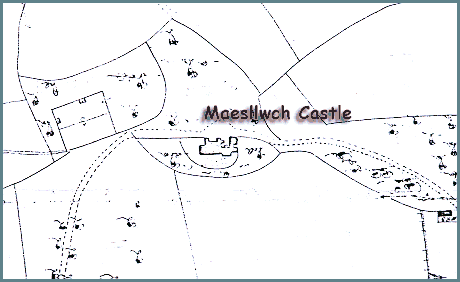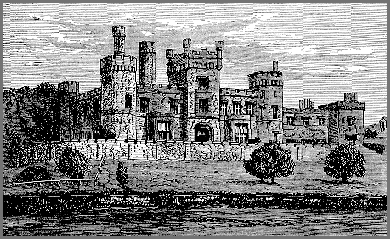
Maesllwch Castle 2
The building
Maesllwch Castle is situated half a mile to the north of Glasbury on Wye, in the old County of Radnorshire.The house originally belonged to the Vaughan family - Richard Haslam in the Powys edition of ‘The Buildings of Wales’ mentions a hall house belonging to William Vaughan, who died in 1582. On his death, the house passed out of the family, through a daughter, to a Charles Lloyd (died 1698). His daughter married Humphrey Howarth, who built a second house on the site in 1715. This house, known as Maeslough House, was a 2 storey, 5 bay house, with a hipped roof , in the Queen Anne style.
The Howarth family were bankrupted around 1750, and the estate was bought by the Clive family, who then sold it in 1772 to John Wilkins, banker & solicitor from Brecon on behalf of his son Walter, who had made his fortune in India.

His son, also Walter Wilkins, commissioned architect William Lugar to build a new, castellated, house on the site; it was moved a little further forward to enjoy a better view over the river Wye. Building continued until 1850. Probably 3 generations of Wilkins were involved in the planning of the castle. The ground plan was the same as that of Glanusk Park near Crickhowell. The exterior style ranged from 14th century to Perpendicular, with 6 dissimilar towers. The entrance hall was a glass roofed atrium; the interior was also an eclectic mix of styles: Norman, Regency and Gothic, and was completed around 1840. It is thought that Lugar also designed the lodge, which stands at the end of the drive, on the Glasbury to Clyro road.
Engraving of Maesllwch Castle from a photograph taken before the 1879 additions
Powys County Archives

A survey carried out in 1775 shows the park to be in existence, suggesting that it was made in the early part of the century by the Howarth family. The extent of the park at that time was roughly what it is today, except for a part by the river, which was bought in the late 19th century.